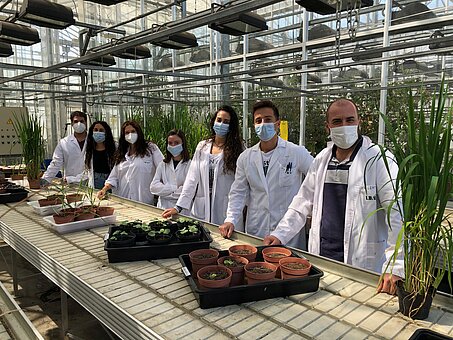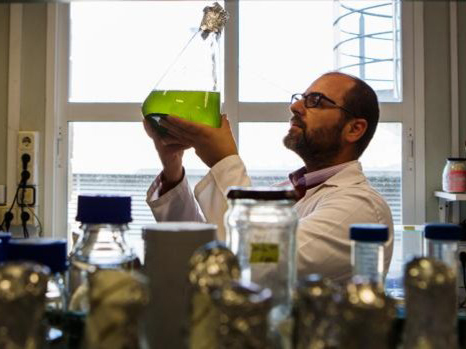The researcher Vicente Mariscal, who leads the research group of the Institute of Plant Biochemistry and Photosynthesis, Symbiosis between Plant and Cyanobacteria, has been featured on the cover of the newspaper ABC Economía on the occasion of the project that he and his group are working on. In their research, they are testing a biofertilizer for rice and cotton crops in the lower Guadalquivir (an area damaged by nitrate contamination) from cyanobacteria. Agroquivir, a cooperative society of a thousand Andalusian farmers, is participating in the project. Thanks to the testing on their crops and the help of researchers such as those from the IBVF, they will be able to achieve a biofertilizer that will replace 50% of the nitrogen they provide.
This shows that biotechnology, biostimulants and biofertilizers will play an important role in a more environmentally friendly agriculture, allowing the development of a new generation of more advanced, sustainable products with equal or higher levels of productivity. And it is a fact that conventional fertilizers, in addition to being of mineral origin, are expensive to produce, require a large amount of energy and only 40% of those used in cultivation are used. The rest, in Vicente’s words, “are transformed into sources of nitrogen or other contaminants that filter into aquifers or are washed by rain into lakes, reservoirs… The soils become impoverished, lose nutrients, and degrade. These nitrogen compounds – he adds – also feed microalgae, phytoplankton and cause eutrophication (which has occurred in the Mar Menor)”. On the other hand, soil microorganisms transform these fertilizers, generating gases such as nitrous oxide, a greenhouse gas.

Vicente Mariscal’s group
In the midst of all this scenario, it is time for biofertilizers and biostimulants to come into play. They have different functions. “Biostimulants are substances of plant or microbial origin that stimulate plant growth, but do not nourish it,” says Mariscal. They cause effects such as improving rooting, maintaining an adequate water status, helping to absorb nutrients, or contributing to supporting abiotic stress (so that the plant can better tolerate excess temperature, light or drought). On the other hand, “biofertilizers are microorganisms that provide nutrients for the plant to grow and develop (nitrogen, phosphorus, potassium…).”
Both products are of biological origin and have many benefits: they improve the yield and quality of crops, as well as soil fertility by preventing its degradation, they require less energy for their production and do not pollute water. Therefore, it is not surprising that the project led by Vicente and the Plant-Cyanobacteria Symbiosis group predicts a very promising future.



